Allison Bruning's Blog, page 26
April 2, 2014
#ISWG: Surviving @CampNaNoWriMo
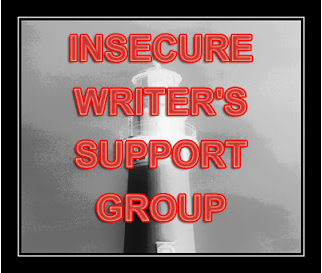
Surviving Camp NaNo
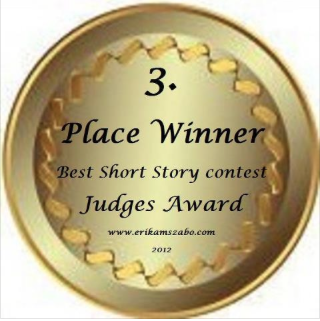 It's the first week of April and like so many writers I am sitting in the wilderness of Camp NaNoWriMo
It's the first week of April and like so many writers I am sitting in the wilderness of Camp NaNoWriMoworking on my next great novel. This is my second year participating at Camp NaNoWriMo. I am working on a historical fiction novel set in 1919 Marion, Ohio that is based on a true story. I had first conceived of the story when I was asked to participate in a short story contest. My story, Field of Grace, took third place. In 2012, I adapted the short story to screenplay for my thesis project at Full Sail University and titled it Field of Grace. This camp session I am converting the screenplay into a novel.
When I started Camp NaNoWriMo a few years ago I was a bit overwhelmed. I had participated in the 2011 NaNoWriMo and didn't win. Me, the girl who wrote 700 pages in two months couldn't even complete 50,000 words in a single month. I was devastated. But I didn't give up. I decided to try again. I couldn't understand how writers could complete such a daunting task.
In 2012, I learned a few trick to winning the NaNoWriMo and CampNaNoWriMo game. I applied the strategies I learned and viola!
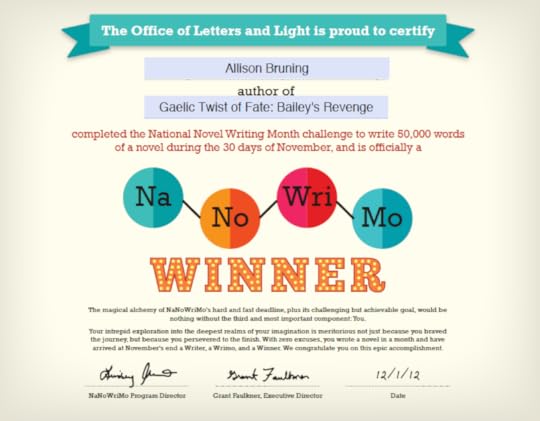
And in 2013.....

Ok so you may have noticed those are the same book. I had started Bailey's Revenge in 2011 but after I won in 2012 I scrapped the entire novel and started all over again because I felt it needed to overhauled. I am so glad I did it too. Bailey's Revenge was released by Mountain Springs House in March and has been on the Top 100 Bestselling Irish Historical Fiction novels since it's release. Sometimes you just have to start a story from scratch.
Now that I have the hang of Camp NaNoWriMo and NaNoWriMo I can see how I can push around 4 - 6 books out per year that are of the highest quality. The lessons I learn through my experiences with NaNoWriMo and Camp NaNoWriMo help me to develop stronger writing skills and keep fresh story ideas around me at all time. The worst thing that can ever happen to an author is to run out of ideas. I have no idea how I went through my writing career without every participating in these events. They are a dream for any writer needing that extra push to get their first draft completed.
Camp NaNo is held twice a year and NaNo is always held in November. The goal is to complete your first draft in 50,000 words by the end of April. That means you need to write approximately 1,700 words a day. It sounds like a lot but you can do it. The secret to completing that many words or more per day is to have a support group. You need the interaction with other NaNo writers to keep you going. One of the reasons I failed Camp NaNo the first time was because I didn't have a support system in place. When my husband and I moved to Louisville in October of 2012 I joined the local NaNo writing group the following month. With the support of my new friends and a daily writing habit I was able to complete the 50,000 word challenge. We moved to Indianapolis last August and I am planning to join a NaNoWriMo group up here.
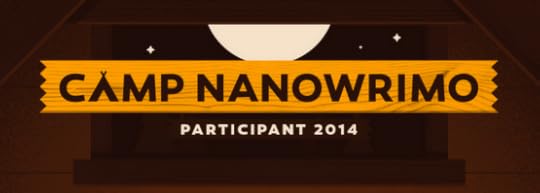
Camp NaNo Rules
1) You must start with a blank page. This means you cannot work on an already existing story. It has to be something new.
2) Don't edit while you are writing. It will only slow you down.
3) Keep track of you daily total then report then on your NaNo page. Do not report your total book word count. It will mess the NaNo Counter up.
4) Have fun!
You can join Camp NaNo at http://campnanowrimo.org
Tips and Tricks to Camp NaNo
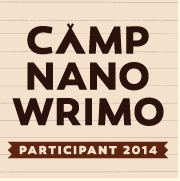 1) Register with the site.
1) Register with the site. You want to create your camper profile. Your camper profile will not disappear after Camp NaNo ends. This means you will not have to create a new one every time you participate. The camper profile is used by other campers so they can get to know you better. You can see mine at http://campnanowrimo.org/campers/allison-bruning
You will also want to create a novel profile for the book you are going to write during Camp NaNo. This will not disappear after the event. Every time you participate in Camp NaNo you will have to add a new novel. Camp NaNo will keep your novels stats on that novel's page.
2) Keep Up With Your Daily Totals
After you have written for the day you will want to report your totals to Camp NaNo. When you sign into Camp NaNo you will see a big blue tent on the right hand side like this except it will say add your daily word count. When you are ready to report you daily progress you will want to place the DAILY number of words in the blue tent then press the green button. I would suggest you do this at the very end of the day because sometimes you will have writing spurts after you have written for the day and you will want to report that.
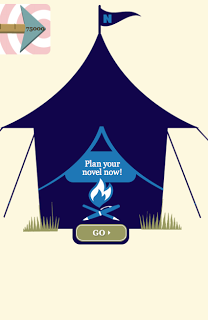
Camp NaNo will keep track of your daily progress on a bar graph that you can access from your novel info page. There is a silver button on the side of that page that takes you to your stats page when you press it. Your novel's stat page will look like this. Camp NaNo will automatically compare your results to the entire cabin you are placed in (we'll talk about that next).
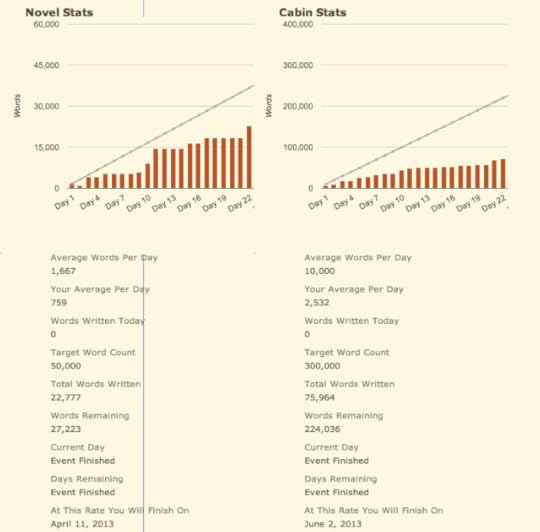
Camp NaNo also gives you a bullseye at the top of your site where you can see how much progress you have made towards your writing goal. This is linked to your novel's stats.
3) Write With Your Friends
If you want to be successful with Camp NaNo then you cannot do this adventure on your own. Camp NaNo understand this. Every registered camper is placed in a cabin with other participants. When you register you will have to set up your cabin settings. You can chose to be placed in a cabin or not participate. I would suggest you chose to participate in the cabin. The cabin is a small group of writers who encourage each other while they are at Camp NaNo. You can request to be placed in a cabin with specific campers or let the Camp NaNo staff surprise you.
Another resource you can use during camp is to join a Facebook group of other Camp NaNo participants. These groups are great because they encourage you to write. The admins of these groups organize games such as Word Wars and Sprints.
Word Wars are occur when participants are given a set amount of time to write as much as they can. When the time is over everyone counts how many words they wrote then report it to the group. The person with the most words wins the contest.
Sprints operate much like Word Wars except after you report your word count you also report your favorite passage or lines. There is no winner.
Here is one group you can join https://www.facebook.com/groups/MSHNANO/
4) Develop A Daily Routine
You are also going to need to develop some discipline if you want to succeed. Chose a time in your day where you can sit and write without any disruptions. Some writers listen to music while they write while other don't. Personally, I only use the music if I'm stuck somewhere or need encouragement. There will be those days when you don't feel like writing. Don't give into those thoughts. Just write. It doesn't have to be pretty or make sense. Just write.
5) Reward Yourself
Don't forget to reward yourself when you have met your daily total. This could be something as simple as a small snack. Save the medium rewards for when you reach the 25%, 50% and 75% mark on the bullseye. Once the bullseye hits 100% give yourself a BIG treat for a job well done.
Camp NaNo will reward you if you complete your writing project with winner's goodies. You will only receive these once they verify you have completed your novel. After you complete your novel you will upload your manuscript to their site where they will count the words. They will let you know if you have achieved the proper word count via your camp mail. If you were successful they will send you a link where you can collect your goodies.
6) Pay Attention To Camp Mail
You will want to read every message that Camp NaNo sends to you via your camper email box. They will send you letters of encouragement and sometimes they will have famous authors email you. The letters have wonderful advice for any level of writer.
Camp NaNo also allows campers to interact with one another by using Camp Mail. You don't have to be in a cabin with someone in order to send/receive email.
7) Let the World Know You Are a Camper
If you have a blog or Facebook account you can let everyone know you are participating in Camp NaNo this year by placing one of their badges on your blog or wall. You can access these via http://campnanowrimo.org/badges
8) Plan You Novel Before Camp
I cannot stress this enough. I know there are some writers out there that write by the seat of their pants. I use to be one of them. You will want to outline your story and intimately know your character before you start Camp NaNo. Don't worry if your story changes during the event. It happens. Just keep writing. If you know where your story is going then it will make it all the easier to write without having to worry about what will happen next to your character.
Another great tool is Scrivener. Scrivener is wonderful because it allows you to write your story in scenes. You can also keep track of your daily writing totals easier because the word count is per scene written. I use one scene a day while I'm writing in NaNo. After the scene is over I take that total at the bottom of the page then report that to Camp NaNo. My scenes tends to be complete chapters. Scrivener also allows me the opportunity to see images, my research and the note card for that chapter while I am writing. The outline is written in note cards that I can manipulate if I need to change the order of something. You can find Scrivener on Facebook at https://www.facebook.com/pages/Scrivener/126134826351
Published on April 02, 2014 09:22
#AtoZ Challenge: B is for Book of Kells: #Irish Ancient Treasure
B is for Book of Kells
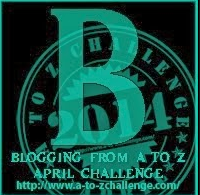 Today's A to Z Blog Challenge takes us to Medieval Ireland. Today ebooks and books are available everywhere and are highly available to readers throughout the world. The invention of Gutenberg's printing press in 1439 revolutionized the literary world. Today it's expected for everyone, no matter what their status is in life, to be able to read. Books and the ability to read and write were very rare during the Medieval Age.
Today's A to Z Blog Challenge takes us to Medieval Ireland. Today ebooks and books are available everywhere and are highly available to readers throughout the world. The invention of Gutenberg's printing press in 1439 revolutionized the literary world. Today it's expected for everyone, no matter what their status is in life, to be able to read. Books and the ability to read and write were very rare during the Medieval Age.

I have always been fascinated by the Book of Kells. It has been considered the unofficial national treasure of Ireland for years. This ancient book has been described to represent the impact of Christianity on Ireland, the power of learning and the spirit of artistic imagination. It was created sometimes between the end of the 7th and 8th centuries by two scribes on 340 vellum leaves in Insular script. Insular script was a style of writing the originated in Ireland during the 7th century then spread to England and from there Europe. It is distinguished by a large initial letter surrounded by red dots. The letters that surround the initial letter at the start of a new paragraph generally diminish in size as the text travel across the page. The letters p, d, q, b are written with very large bows while the letters with ascenders (b, d, h, l, etc.) are written with triangle or wedge shaped tops. Here's a page from the Book of Kells that shows some of the stylization I was describing.

The Book of Kells contains the four Christian gospels of Matthew, Mark, Luke and John; The Book of Columbia (aka: the Eusebian canons), and a fragment of Hebrew names handwritten in black, red, purple, and yellow ink. The book is missing part of the John's Gospel and some preliminary matter that was supposedly removed when the book was stolen in the 11th century. The Gospel of John stops at John 17:13 and preliminary matter that remains includes two fragments of Hebrew names, a gospel summary, short biographies of the Evangelists, and the Book of Columbia. You can view the actual book on Trinity College Dublin's digital collections page.
 Today's A to Z Blog Challenge takes us to Medieval Ireland. Today ebooks and books are available everywhere and are highly available to readers throughout the world. The invention of Gutenberg's printing press in 1439 revolutionized the literary world. Today it's expected for everyone, no matter what their status is in life, to be able to read. Books and the ability to read and write were very rare during the Medieval Age.
Today's A to Z Blog Challenge takes us to Medieval Ireland. Today ebooks and books are available everywhere and are highly available to readers throughout the world. The invention of Gutenberg's printing press in 1439 revolutionized the literary world. Today it's expected for everyone, no matter what their status is in life, to be able to read. Books and the ability to read and write were very rare during the Medieval Age.
I have always been fascinated by the Book of Kells. It has been considered the unofficial national treasure of Ireland for years. This ancient book has been described to represent the impact of Christianity on Ireland, the power of learning and the spirit of artistic imagination. It was created sometimes between the end of the 7th and 8th centuries by two scribes on 340 vellum leaves in Insular script. Insular script was a style of writing the originated in Ireland during the 7th century then spread to England and from there Europe. It is distinguished by a large initial letter surrounded by red dots. The letters that surround the initial letter at the start of a new paragraph generally diminish in size as the text travel across the page. The letters p, d, q, b are written with very large bows while the letters with ascenders (b, d, h, l, etc.) are written with triangle or wedge shaped tops. Here's a page from the Book of Kells that shows some of the stylization I was describing.

The Book of Kells contains the four Christian gospels of Matthew, Mark, Luke and John; The Book of Columbia (aka: the Eusebian canons), and a fragment of Hebrew names handwritten in black, red, purple, and yellow ink. The book is missing part of the John's Gospel and some preliminary matter that was supposedly removed when the book was stolen in the 11th century. The Gospel of John stops at John 17:13 and preliminary matter that remains includes two fragments of Hebrew names, a gospel summary, short biographies of the Evangelists, and the Book of Columbia. You can view the actual book on Trinity College Dublin's digital collections page.
Published on April 02, 2014 08:13
B is for Book of Kells: #Irish Ancient Treasure
B is for Book of Kells
 Today's A to Z Blog Challenge takes us to Medieval Ireland. Today ebooks and books are available everywhere and are highly available to readers throughout the world. The invention of Gutenberg's printing press in 1439 revolutionized the literary world. Today it's expected for everyone, no matter what their status is in life, to be able to read. Books and the ability to read and write were very rare during the Medieval Age.
Today's A to Z Blog Challenge takes us to Medieval Ireland. Today ebooks and books are available everywhere and are highly available to readers throughout the world. The invention of Gutenberg's printing press in 1439 revolutionized the literary world. Today it's expected for everyone, no matter what their status is in life, to be able to read. Books and the ability to read and write were very rare during the Medieval Age.

I have always been fascinated by the Book of Kells. It has been considered the unofficial national treasure of Ireland for years. This ancient book has been described to represent the impact of Christianity on Ireland, the power of learning and the spirit of artistic imagination. It was created sometimes between the end of the 7th and 8th centuries by two scribes on 340 vellum leaves in Insular script. Insular script was a style of writing the originated in Ireland during the 7th century then spread to England and from there Europe. It is distinguished by a large initial letter surrounded by red dots. The letters that surround the initial letter at the start of a new paragraph generally diminish in size as the text travel across the page. The letters p, d, q, b are written with very large bows while the letters with ascenders (b, d, h, l, etc.) are written with triangle or wedge shaped tops. Here's a page from the Book of Kells that shows some of the stylization I was describing.

The Book of Kells contains the four Christian gospels of Matthew, Mark, Luke and John; The Book of Columbia (aka: the Eusebian canons), and a fragment of Hebrew names handwritten in black, red, purple, and yellow ink. The book is missing part of the John's Gospel and some preliminary matter that was supposedly removed when the book was stolen in the 11th century. The Gospel of John stops at John 17:13 and preliminary matter that remains includes two fragments of Hebrew names, a gospel summary, short biographies of the Evangelists, and the Book of Columbia. You can view the actual book on Trinity College Dublin's digital collections page.
 Today's A to Z Blog Challenge takes us to Medieval Ireland. Today ebooks and books are available everywhere and are highly available to readers throughout the world. The invention of Gutenberg's printing press in 1439 revolutionized the literary world. Today it's expected for everyone, no matter what their status is in life, to be able to read. Books and the ability to read and write were very rare during the Medieval Age.
Today's A to Z Blog Challenge takes us to Medieval Ireland. Today ebooks and books are available everywhere and are highly available to readers throughout the world. The invention of Gutenberg's printing press in 1439 revolutionized the literary world. Today it's expected for everyone, no matter what their status is in life, to be able to read. Books and the ability to read and write were very rare during the Medieval Age.
I have always been fascinated by the Book of Kells. It has been considered the unofficial national treasure of Ireland for years. This ancient book has been described to represent the impact of Christianity on Ireland, the power of learning and the spirit of artistic imagination. It was created sometimes between the end of the 7th and 8th centuries by two scribes on 340 vellum leaves in Insular script. Insular script was a style of writing the originated in Ireland during the 7th century then spread to England and from there Europe. It is distinguished by a large initial letter surrounded by red dots. The letters that surround the initial letter at the start of a new paragraph generally diminish in size as the text travel across the page. The letters p, d, q, b are written with very large bows while the letters with ascenders (b, d, h, l, etc.) are written with triangle or wedge shaped tops. Here's a page from the Book of Kells that shows some of the stylization I was describing.

The Book of Kells contains the four Christian gospels of Matthew, Mark, Luke and John; The Book of Columbia (aka: the Eusebian canons), and a fragment of Hebrew names handwritten in black, red, purple, and yellow ink. The book is missing part of the John's Gospel and some preliminary matter that was supposedly removed when the book was stolen in the 11th century. The Gospel of John stops at John 17:13 and preliminary matter that remains includes two fragments of Hebrew names, a gospel summary, short biographies of the Evangelists, and the Book of Columbia. You can view the actual book on Trinity College Dublin's digital collections page.
Published on April 02, 2014 08:13
April 1, 2014
Neolithic #Ireland: Ireland's First #Farmers #Irish #ancient #history
 Neolithic Ireland: Ireland's First Farmers
Neolithic Ireland: Ireland's First FarmersWelcome back to my series on Irish history and culture. The last time we talked about Irish history and culture we spend some time in Mesolithic Ireland. This week we are moving forward in time to about 4000 BC.
The Neolithic period, aka Late Stone Age, began in the Middle East sometime around 10,000 BC with the discovery of farming. Once a society learned how to farm they slowly abandoned their nomadic hunter-gatherer lifestyle and became more sedentary. This dramatic shift from hunter-gather to farmer is often called the Neolithic Revolution. The Neolithic Revolution affected all human populations and was a major turning point in human history. It was a period in time where one generations abandoned the lifestyle of their ancestors to take change the entire course of human development. Once a society mastered farming they could turn to animal domestication. Sometimes learning how to farm and domesticate animals went hand in hand. Information about farming and domestication spread throughout the trade routes. One society taught another society and so forth. As the hunter-gatherers died out the new generation abandoned the old ways and created new ways for their society. Farming allowed for groups of human to create settlements. These societies would eventually create their own customs and political system. New tools were developed. Specialized skill sets were now part of the norm in every society from healer, chief, and more. It was a completely different world than the one their ancestors dwelt in.
Ireland was the last place to be colonized and the Irish people would be one of the last groups to take up farming. The practice of farming had spread from the Middle East for thousands of years. It had reached England sometime around 4,000 BC. After England had adapted to farming they decided to colonize Ireland for farming and invaded Ireland with their new technology around 3900BC and 3000BC. The Irish hunter - gatherer societies were gradually assimilated into the newly arrived English Neolithic cultures.
Published on April 01, 2014 08:31
#AtoZ #Blog Challenge: A is for Appomattox
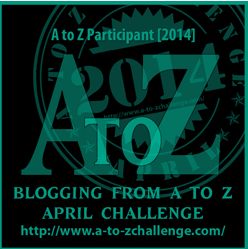
It's April 1st! I'm so excited. I've made the preparations and am ready for the challenges ahead. This month I am participating in the Blogging from A to Z April Challenge. I have never done this blog challenge before but had heard about it. I decided to take the plunge and will be posting daily on historical topics and completing my normal posts. I am also participating in CampNaNoWriMo this month. I'll be writing the first draft of Field of Grace. Field of Grace is set to be released June 6th.
Today is Tuesday and I usually post a topic about Irish history and I have a post for the the Express Yourself Weekly Blog Tour. I will be posting the next segment in our Irish History series in the next post but I will not be completing the Express Yourself this week.
Alright. Here we go.
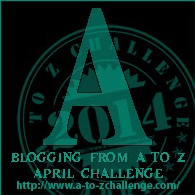
A is for Appomattox
The United States Civil War was the bloodiest war in US History that left everlasting marks upon this country. The war started April 12, 1861. There were more than three million men who fought in the war and 620, 000 of them died. The bloodiest day of the entire conflict occurred at the battle of Antietam on September 17, 1862 where 12,401 Union and 10,318 Confederate soldiers were killed, missing or wounded. That is double the number of casualties that occurred on D-Day. You can read more interesting Civil War Facts by visiting this page.
The Civil War ended on April 9, 1865 when the Confederate Army under the direction of General Robert E. Lee surrendered to Commander Ulysses S. Grant.
Although General Robert E. Lee surrendered his troops it did not officially end the war. There were would be 14 more occasions where the Confederates would either lose a battle or surrender. The Battle of Fort Blakely in Alabama - This battle occurred only a six hours after Lee surrendered. During the battle Confederate Brigadier General St. John Richardson Liddell was captured and he surrendered his men. Out of Lindell's 4,000 men, 3,400 were captured, 250 died and 200 ran away. Battle of Columbus, Georgia (April 16) - General James H. Wilson's Raiders were unaware of Lee's surrender and the assassination of President Lincoln only a few days earlier. They marched from Alabama into Georgia where around midnight they destroyed most of the manufacturing in Columbus. 43rd Battalion Virginia Cavalry, aka: Mosby's Raiders, disbanded (April 21) - Mosby's Raiders were the elite special forces of the Confederate Army. General Robert E. Lee has commissioned Commander John Singleton Mosby to form a battalion that would use psychological and guerrilla warfare techniques to defeat Union strongholds. The battalion was formed on June 10, 1863 at Rector's Cross Roads near Rectortown, Virginia. The raiders never accepted surrender and had to be officially disbanded. Surrender of General Joseph E. Johnston and his various armies (April 26) - General Joseph E. Johnston surrendered around 30,000 men who made up the Confederate troops in North Carolina, South Carolina, Georgia, and Florida. He surrendered his men to Major General William T. Sherman at Bennett Place, Durham, North Carolina. It was the largest troop surrender in the Civil War. Surrender of the Confederate departments of Alabama, Mississippi and East Louisiana regiments (May 4) - Mobile, Alabama had fallen under Union control on April 12, 1865 but the Confederate troops in that area hadn't surrendered yet. Richard Taylor, the son of former US President Zachary Taylor, was the commander of the Confederate forces in Alabama, Mississippi and East Louisiana. He had received reports concerning Johnston's surrender and had agreed to meet with Major General Edward R. S. Canby of the Union. The two men conferenced north of Mobile and agreed to a 48 hour truce on April 30th. On May 4th, Taylor agreed to terms of surrender and handed all of the Confederate departments under his control to Union General Edward Canby on May 8, 1865. He was paroled three days later. Surrender of the Confederate District of the Gulf (May 5) - The Confederate troops at in the Gulf of Mexico region of the United States was under the direction of General Dabney Herndon Maury. When he learned of Johnston's surrender he realized he had run out of options to win the war in the Gulf region. On May 5, he surrendered around 5, 000 men at Citronelle, Alabama. It was the last of Confederate troops to surrender east of the Mississippi. Confederate President Jefferson Davis Captured (May 10) - President Jefferson Davis had evacuated the Confederate capital in the early part of April. On May 5, he held a meeting with his cabinet in Washington, Georgia where he dissolved the Confederate Government.
8) Surrender of the Confederate Department of Florida and South Georgia (May 10) - Tallahassee, Florida was the only Confederate city not to be captured by the Union. Confederate Major General Samuel Jones surrendered his department to Brigadier General Edward M. McCook in the city. The Florida Confederate troops numbered around 8,000 men. 9) Surrender of the Northern Sub-District of Arkansas (May 11) - Confederate Brigadier General "Jeff" Meriwether Thompson commanded a the Thompson Brigade in Arkansas. After the collapse of the Confederate Army's forces east of the Mississippi, Lieutenant Colonel Charles W. Davis of the 51st Illinois Infantry went to Arkansas to meet with Thompson concerning terms of surrender. Thompson met with the Union commander on May 9 and requested he be granted two days to organize the men. Davis agreed to his terms. On May 11, the 7,500 Confederate soldiers organized at Wittsburg and Jacksonport, Arkansas where Thompson and his officers surrendered their entire force to the Union. 10) Surrender of Confederate forces of North Georgia (May 12) - Between 3000 to 4000 Confederate troops were surrendered to Union forces at Kingston, Georgia. 11) Battle of Palmito Ranch near Brownsville, Texas (May 12–13) - Considered the last battle of the Civil War, the Battle of Palmito Ranch was fought twelve miles east of Brownsville, Texas. The Union Army had occupied Brownsville since November 2, 1863 and used it as a base of operations for military campaigns. In March, the Confederate and Union armies in South Texas had agreed to an gentleman's agreement. Neither army would attack the other without giving a written declaration of the attack. There was peace on both sides until May 11th, when Union Colonel Theodore H. Barrett of the 1st Missouri Colored Infantry ordered his lieutenant colonel, David Branson to attack the Confederate encampments at White and Palmito Ranches even though he knew it was in violation of orders from headquarters. He knew about Lee's surrender and that many of the Confederate forces had disbanded. He decided to proceed anyways. No one knows why he ordered the attack. The Mexicans warned the Confederate troops of the attack with shots fired from across the river. The skirmish involved Caucasian, African American, Mexican and Native American troops. You can read more about the battle by pressing the title of this paragraph. The Confederates won the battle but surrendered their forces on June 2. 12) Surrender of Kirby Smith (May 26) - Confederate General Edmund Kirby Smith commanded the Trans-Mississippi Department after the fall of Vicksburg. He had tried to send in reinforcements to Vicksburg after the Battle of Mansfield and the Battle of Pleasant Hill but was unsuccessful. He surrendered 43,000 Confederate soldiers to Union Major General Edward Canby in Shreveport, Louisiana. 13) Surrender of Cherokee chief Stand Watie (June 23) 14) Surrender of CSS Shenandoah (November 6)
Published on April 01, 2014 05:21
March 30, 2014
Author Spotlight: Summoned for Greatness

Today I would like to introduce to you a new book by author, Rainy Kane. Summoned is a Horror book that was released on March 27th and has hit three Amazon bestsellers lists.
#4,680 Paid in Kindle Store #25 in Kindle Store > Kindle eBooks > Literature & Fiction > Horror > Occult#28 in Books > Literature & Fiction > Genre Fiction > Horror > Occult#57 in Books > Science Fiction & Fantasy > Fantasy > Urban
Summoned can be found on Amazon at http://www.amazon.com/Summoned-Rainy-Kaye-ebook/dp/B00JAZT88G/

Twenty-three year old Dimitri has to do what he is told—literally. Controlled by a paranormal bond, he is forced to use his wits to fulfill unlimited deadly wishes made by multimillionaire Karl Walker.
Dimitri has no idea how his family line became trapped in the genie bond. He just knows resisting has never ended well. When he meets Syd—assertive, sexy, intelligent Syd—he becomes determined to make her his own. Except Karl has ensured Dimitri can’t tell anyone about the bond, and Syd isn’t the type to tolerate secrets.
Then Karl starts sending him away on back-to-back wishes. Unable to balance love and lies, Dimitri sets out to uncover Karl’s ultimate plan and put it to an end. But doing so forces him to confront the one wish he never saw coming—the wish that will destroy him.
A dark twist on the genie folklore, SUMMONED follows a reluctant criminal as he unravels the mystery of the paranormal bond controlling him.
Find out more at http://www.summonedtheseries.com
Who Is Rainy Kaye?

Rainy Kaye is an aspiring overlord. In the mean time, she blogs at http://www.rainyofthedark.com and writes paranormal novels from her lair somewhere in Phoenix, Arizona. When not plotting world domination, she enjoys getting lost around the globe, studying music so she can sing along with symphonic metal bands, and becoming distracted by Twitter. She is represented by Rossano Trentin of TZLA.
Published on March 30, 2014 18:00
Author Spotlight: Mythical Beasts and Lost Cities #fantasy #DavidVPyle #scifi

 http://amzn.to/1lfoPlvWelcome back to the Author Spotlight. My guest today is David V. Pyle. David is the author of The Lost Cities (The Age of Beasts:1). His book is a YA Mytical Science Fiction book published by Mountain Springs House on March 28, 2014.
http://amzn.to/1lfoPlvWelcome back to the Author Spotlight. My guest today is David V. Pyle. David is the author of The Lost Cities (The Age of Beasts:1). His book is a YA Mytical Science Fiction book published by Mountain Springs House on March 28, 2014.Hi David. Can you tell us about your book?
In a world where beasts rule and humans serve, a rare free human named Kyra Lynne finds herself sought by the beasts for the knowledge she has about the legendary forbidden weapons – highly destructive instruments from ages past. She soon finds herself enslaved to a bovine prince named Meateus Khan who seeks honor for his race. A scheming Onk merchant sets them off on a quest to the legendary lost cities in the mountains in search of the lost weapons, joined by members of two other beast clans the canine and feline Panthera – who would see the weapons destroyed.
What inspired you to write The Lost Cities?
The inspiration came from an early 1980's comic called the Justice League of America, where they were battling a group called the ani-men. My mind started tumbling over what-ifs and I handed in my first version of the story for a 1984 college creative writing class.
How did writing The Lost Cities change you?
It gave me a desire to be a more accomplished writer like King or Spielberg.
Who is David V. Pyle?
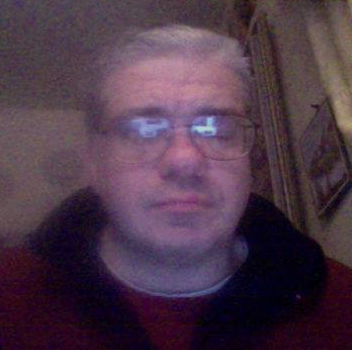 Though David V. Pyle has held many jobs over the years, being a fiction writer has always been his
Though David V. Pyle has held many jobs over the years, being a fiction writer has always been his main interest even though he may not have always pursued it well enough. Originally from Princeton, IN, where he graduated High School and took writing related courses, he went on to attend Vincennes University in Vincennes, IN, and obtained a degree in journalism. After working a few years as a journalist and freelance nonfiction writer, he pursed other careers. Late in the 90’s his interest in writing fiction resurged with stronger and better ideas, he has taken courses through Full Sail University to help him hone my skills as a creative writer. Now his plans are to focus more on writing fiction in addition to his day job and build it as a career in as many ways as he can: books, short stories, scripts, comicbooks.
Published on March 30, 2014 11:57
March 29, 2014
My #Irish Eyes are Smiling. #BaileysRevenge is #Amazon #Bestseller
 http://amzn.to/1i9vg8p
http://amzn.to/1i9vg8pMy fans are awesome!!!
I woke up this morning to find Bailey's Revenge had climbed up the Irish Historical Fiction Bestsellers List on Amazon and was listed at one of the Top Hot New Releases in Irish Historical Fiction. I feel truly blessed. Thank you everyone for supporting this book.

Published on March 29, 2014 06:34
March 28, 2014
Work Hard Be Rewarded Harder: #Screenwriting for #Hollywood

Mr. Bergenfeld is known around Hollywood as a leader in acquiring some of the most influential and respected intellectual properties worldwide. Teamwork is vital to all of his success and it will always be something of great value to Mr. Bergenfeld. Mr. Bergenfeld has worked hands on with, the Emmy Award winning production company, Trium Entertainment on all of his non-scripted creative. They developed all original content together.
Jason Bergenfeld has been working in Hollywood for over a decade and has produced shows for NBC, ABC, FOX, Discovery, SPIKE, Lifetime, MSNBC, TruTV, GSN, BET, AOL TV, A&E, and more. I had the chance to sit down with Jason Bergenfeld and discuss what it takes for a screenwriter to sell his or her work.
 Jason Bergenfeld is someone who anyone can look up to for inspiration. Diagnosed with Dyslexia and A.D.D. as a child, he had a very difficult time reading and writing. He overcame his struggles by constantly reading material over and over again. The past three decades his intense study of the written word changed his writing skills and creativity. He evolved with the help of a dictionary and thesaurus by his side. Today he reads hundreds of scripts and has a successful career as a producer on several projects including Sara Sweetcheeks (Film), Roughnecks (Film) & The You In Me (Film)*
Jason Bergenfeld is someone who anyone can look up to for inspiration. Diagnosed with Dyslexia and A.D.D. as a child, he had a very difficult time reading and writing. He overcame his struggles by constantly reading material over and over again. The past three decades his intense study of the written word changed his writing skills and creativity. He evolved with the help of a dictionary and thesaurus by his side. Today he reads hundreds of scripts and has a successful career as a producer on several projects including Sara Sweetcheeks (Film), Roughnecks (Film) & The You In Me (Film)*Mr. Bergenfeld also likes to write the stories that leave him with a sense of “I have to write this.” When I asked him about his writing process he said it all begins with a story idea that eventually evolves into a full story with story boarding. After he gets an idea he will spend weeks, even months, conducting research. He wants to know what makes his story idea so different from the similar. He uses a wide range of research sources to glean the vital information that he requires to bring his story to life. “People may know the subject but they don’t know the individuals that were responsible for each of the subjects,” Bergenfeld stated.
Character development and world building are vital for any screenwriter. There are plenty of good writers who write screenplays that never sell. Why don’t they sell? Because the characters are dry and there isn’t enough in the script to show the world in which the story takes place. “People are lazy these days. They just want to write and get it sold. What they don’t understand is that you have to create something that will fascinate people. If you cut corners people will see. Take the time to develop your story. If you work hard you get rewarded hard.” Bergenfeld explained.
Gone are the days when a writer could just write a script and sell it. Hollywood’s thinking has become transmedia. Transmedia means a story is told through novel, screenplay, television, game and graphic novel. A writer needs to understand how to convey their story in all media outlets if they want to sell their work. This is why character development is essential. Your characters and the world they live in needs to be able to cross into all media outlets, especially games and graphic novels. People want to interact with your characters. They tend to relate the characters to people they know or to themselves.
Lately, Hollywood has been releasing movies based on novels, games and graphic novels. Some of these movies are sequels or remakes of other hit movies. It may seem like Hollywood is out of ideas but Jason Bergenfeld disagrees. He believes Hollywood has fallen into the mindset of “gamification.” Gamification is the process in which you can take a story idea and develop it into a game and merchandise that will sell. A screenwriter needs to develop a story that can reach to the masses through gamification. People want to see the characters on screen and become them in a game. Gaming has taken the world by storm and the fantasy world has exploded. Every story is a fantasy that can be exploited into a game and the screenplay needs to have the entire transmedia package in order for it to sell well.
Every story, including reality shows, needs to have a bible. In fact, if you think about it, writing a novel is building a bible. You are giving the characters a voice and brining their world to life. A bible is beneficial to the screenwriter because it explains everything about the world and the characters the screenwriter has created. You want to develop a believable world and characters. The facts gleaned from your research needs to be implemented into the world in order to make the story believable. Jason Bergenfeld believes writers who do not create their story’s bible are doing themselves an injustice. “People fall in love with characters. Stories are a dime a dozen. People who don’t take the time to build the world are going to have trouble selling stuff,” Bergenfeld stated
 Whenever a screenwriter who has not taken the time to develop their stories world and create believable characters try to sell their story they may come across an study executive pass their work by saying “It still needs development.” Development means time and money. Studios rarely have the time anymore to develop an idea into a marketable screenplay. “If you know a character in your screenplay then why can’t you build it farther outside your script? Bergenfeld added. Don’t be in a rush to sell your story. If you need more time to develop your world and characters then take the time to do so. The more believable the characters and worlds are the higher probability you have to sell your work.
Whenever a screenwriter who has not taken the time to develop their stories world and create believable characters try to sell their story they may come across an study executive pass their work by saying “It still needs development.” Development means time and money. Studios rarely have the time anymore to develop an idea into a marketable screenplay. “If you know a character in your screenplay then why can’t you build it farther outside your script? Bergenfeld added. Don’t be in a rush to sell your story. If you need more time to develop your world and characters then take the time to do so. The more believable the characters and worlds are the higher probability you have to sell your work.Education is key. If you’re not a knowledgeable screenwriter then that will show in your work. Go to school, read the books, read other screenplays, do what you must do in order to better your writing. Don’t be in a rush to sell that script. Remember, what Stephen King once said, “Talent is cheaper than table salt. What separates the talented individual from the successful one is a lot of hard work.”
* ROUGHNECKS (Written By Michael Walsh “NY TIMES BEST SELLING AUTHOR)
based on a true story is a mix between Gangs of New York and The Dirty Dozen. The first paratroopers for the U.S. military that helped defeat the Germans at a pivotal battle were not made up of trained soldiers, but rather convicted murderers on death row. They were given a choice; die on the electrocution chair or die fighting for your country. Produced By: Anthony Samadani, Jason Bergenfeld & Eva Lontscharitsch.
Sara Sweetcheecks (Written By Babaloo Mandel) is funny and magical family entertainment about a widowed father who hires Sara Sweetcheeks, a modern Mary Poppins-like nanny to help raise his three children, only to discover that the endearing Sara is less like Mary Poppins and more like Lord Voldemort, only with a cuter nose. Produced By: Joshua Mandel, Anthony Samadani & Jason Bergenfeld
The You In Me (Written By Babaloo Mandel) is about two self-centered men's lives become intertwined, forcing them to become caring human beings, in spite of one of them being a thoroughly outrageous punk rocker who died in 1977. Produced By: Joshua Mandel & Jason Bergenfeld
Published on March 28, 2014 12:24
#Blessings: My forgotten #literary #treasure revisted

Did you ever have a writing project that you wanted to write so bad but then something happens and you had to abandon it? I have a few of those projects. I have held onto an idea for a sci-fi book that is loosely based off of a Star Trek: TNG fan fiction story I wrote in Middle School. I rewrote the story into a screenplay when I was in High School then shoved it away. I had wanted to send it to Start Trek:TNG but never did. The story popped up again while I was in graduate school and we were studying graphic novels. I changed the characters, removed the Star Trek stuff, created my own world and renamed the series, Mystique. Little did I realize that I had been building that world for years every time I wrote the fan fiction. After graduate school I had a producer who was interested in using my story for a webseries. He created a banner for it but never green lighted the idea due to budget constraints. Without an illustrator nor a producer to help me I once again shoved my story idea to the back burner.
This week I was blessed to meet a wonderful artist in the UK named Carol Ann. She had created some art work for one of the MSH authors. I told Carol Ann about Mystique and she wanted to create the images for it. This is the first drawing she did of Ziva Benjamin.

Ziva is the protagonist of Mystique. She's Bene Isreali originally from New Orleans, Lousiana but after the Second American Revolution ended in 2045 her nationality is not USA but United Eastern Alliance because she lives and works in New York City. She's the mother of K'Lara (age: 14) and Hope (age: 7) Williams. Ziva has an off and on again relationship with the father of her children, K'Shawn Williams that is interrupted when she and her daughters are transported to 2070 in a car accident. A deadly warrior trained in the martial arts with a dark past and no family to help her raise her children, Ziva not only struggles with her own personal demons but with the new life she is forced to live as a member of the Mystique.
Published on March 28, 2014 07:20



